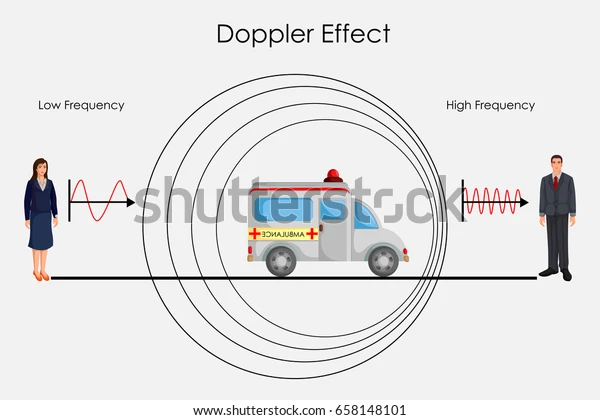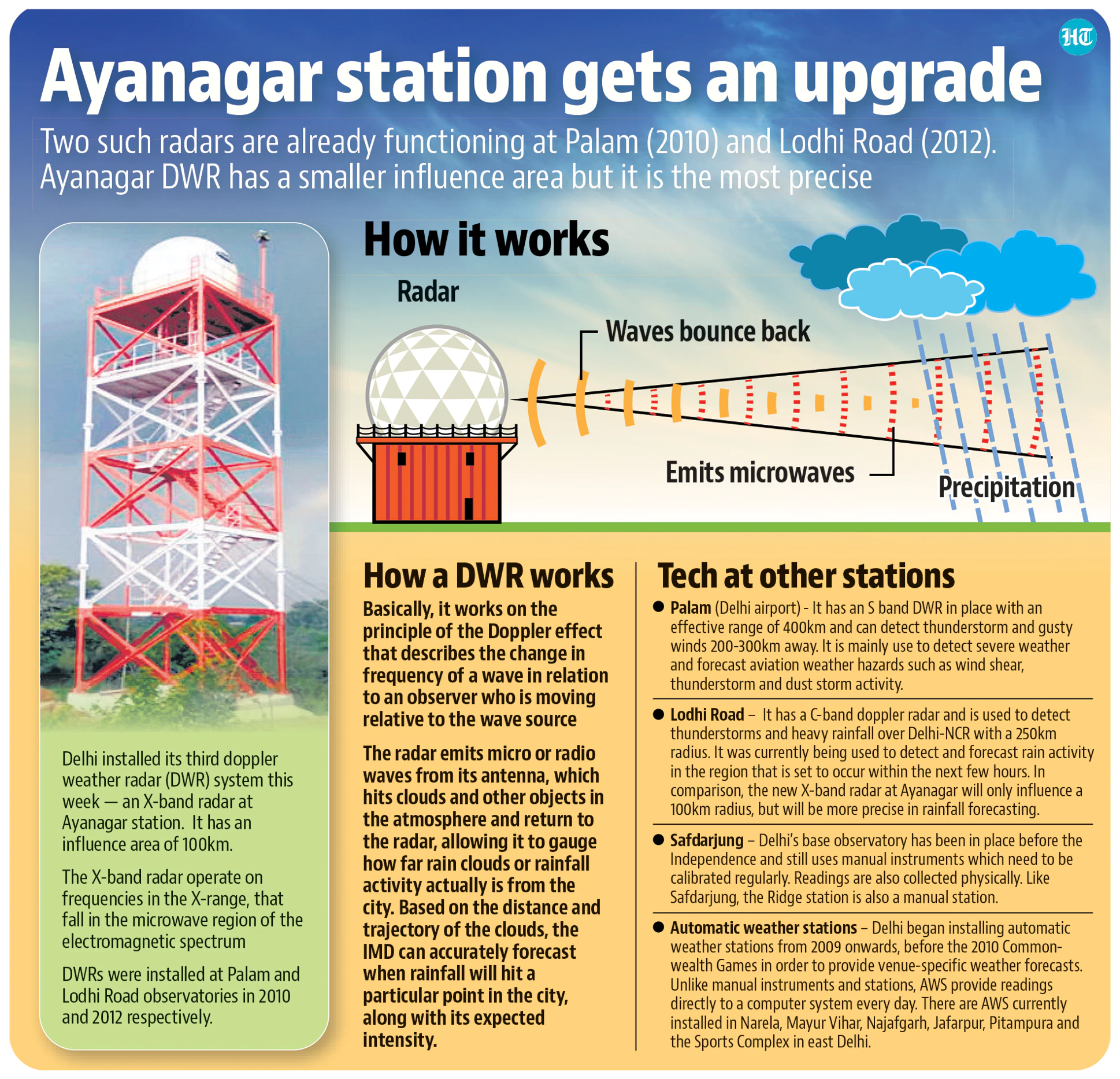17 Jan Doppler weather radar network by IMD
Doppler weather radar network by IMD
This article covers “Daily current affairs for UPSC” and the topic is ‘The Doppler weather radar network’ which is in the news, it covers “Science and Technology” In GS-3, the following content has relevance for UPSC.
For Prelims: Facts about the Doppler effect
For Mains: GS-3, Significance of Doppler weather radar
Why in news:
- The Ministry of Earth Science has officially opened the Doppler Weather Radar (DWR) Systems in Jammu & Kashmir, Uttarakhand, and Himachal Pradesh on the occasion of the 148th anniversary of the establishment of the India Meteorological Department (IMD).
- The Doppler weather radar network will be spread across the entire nation by 2025, according to plans made by the Ministry of Earth Science, allowing for more precise forecasts of extreme weather events.
How It works:
- A parabolic dish antenna and a foam sandwich spherical radome are used in the radar, which is based on the Doppler principle, to increase precision in long-range weather forecasting and surveillance.
- DWR is equipped to find a storm center, as well as the path of a tornado or gust front, as well as to measure the intensity and velocity of wind shear and rainfall.
About Doppler Radar Effect
- It is a customized radar that generates velocity information about distant objects by using the Doppler effect.
- It utilizes a parabolic dish antenna with a foam sandwich spherical radome to increase precision in long-range weather forecasting and surveillance.
- It has the tools necessary to pinpoint the center of a storm, the path of a tornado or gust front, and the intensity and velocity of the wind.
- In the case of a natural disaster brought on by severe weather, it gives advanced information, boosting the lead time that is so crucial for saving lives and protecting property.
- Doppler radars are classified according to their uses as follows: Doppler radar can be categorized into several different groups based on wavelength, and these groups are L, S, C, X, and K.

Doppler Radar effect
Radio detection and ranging (radar)
It is a device that employs electromagnetic radiation in the microwave spectrum to identify the range and direction, altitude, intensity, and motion of moving and stationary objects.

How a DWR Works
The Doppler Radar
- It is a customized radar that produces velocity data about distant objects by utilizing the Doppler effect.
- The Doppler effect The frequency that is being observed by the observer changes as the source and the signal is moving relative to one another. The frequency rises as they go closer, and the opposite is also true.
- This is achieved by sending a microwave signal toward a target and measuring how the frequency of the returned signal has changed due to the motion of the target.
- This variation allows for direct and extremely accurate measurements of a target’s radial component of velocity concerning the radar.
Types
- L Band Radars: Work at a frequency of 1-2 GHz and a wavelength of 15–30 cm. mostly employed for research of clean air turbulence.
- S-band radars: They function between 2-4 GHz and have a wavelength of 8 to 15 cm. The wavelength and frequency of S-band radars make them difficult to attenuate. They can thus be used for both local and global weather observation. This band of radar has the disadvantage that it needs a big antenna dish and a big motor to power it.
- C band radars: They function between 4 and 8 cm in wavelength and 4 and 8 GHz in frequency. The size of the dish does not need to be extremely great because of the wavelength and frequency.
As a result, TV stations can afford C-band radars. This kind of radar works best for close-range weather observation since the signal is more easily muted.
- X-band radars: They function at a frequency of 8–12 GHz and a wavelength of 2.5–4 cm. The X-band radar has a shorter wavelength, which makes it more sensitive and capable of detecting tiny particles. Lightning and thunderstorm detection are done using it.
- K band radars: They function at frequencies of 27–40 GHz and 12–18 GHz, respectively, with wavelengths of.75–1.2 cm or 1.7–2.5 cm. A strong water vapor absorption line causes this band to be split in half. It’s only that this band is more sensitive. It’s comparable to the X band.
Significance of the Doppler Radar
- The accuracy of weather forecasts has improved by 20–40% for various severe weather events.
- Farmers and fishers benefit from the warning and advising services as their economies grow.
- For instance, a rupee invested in the monsoon mission program returned 50 rupees for every rupee invested.
- Agromet Advisories at District and Block Levels are used efficiently by millions of farmers at all stages of farming, and the service is expanding. This has been especially beneficial for farmers living below the poverty line.
- It aids the general public, disaster management, and stakeholders in launching prompt reaction actions to further mitigate calamities.
- The ability to predict the monsoons, which is essential for maintaining our food security, has improved the economy and decreased the number of fatalities brought on by monsoonal floods and droughts in south Asia.
- With their accurate forecasts and prompt warnings, these advancements have helped in recent years to reduce the death toll from a variety of extreme phenomena like cyclones, heavy rain, thunderstorms, heat waves, and cold waves.
Way Ahead
- To supply climate goods and information for sectoral applications, a national framework should be established as soon as possible.
- It is imperative that the disaster managers, general public, and stakeholders adhere strictly to the National Disaster Management Plans, rules, and SOPs put in place by the current administration.
Image Source:
Article Source:
Daily Current Affairs for UPSC
Current Affairs plays a significant role not only UPSC examination but also in any competitive examination. So, Every UPSC aspirant should read current affairs regularly. Here, Plutus IAS delivers the best daily current affairs for the UPSC examination. Also, read the Weekly, and Monthly Current Affairs for The IAS exam preparation.




No Comments